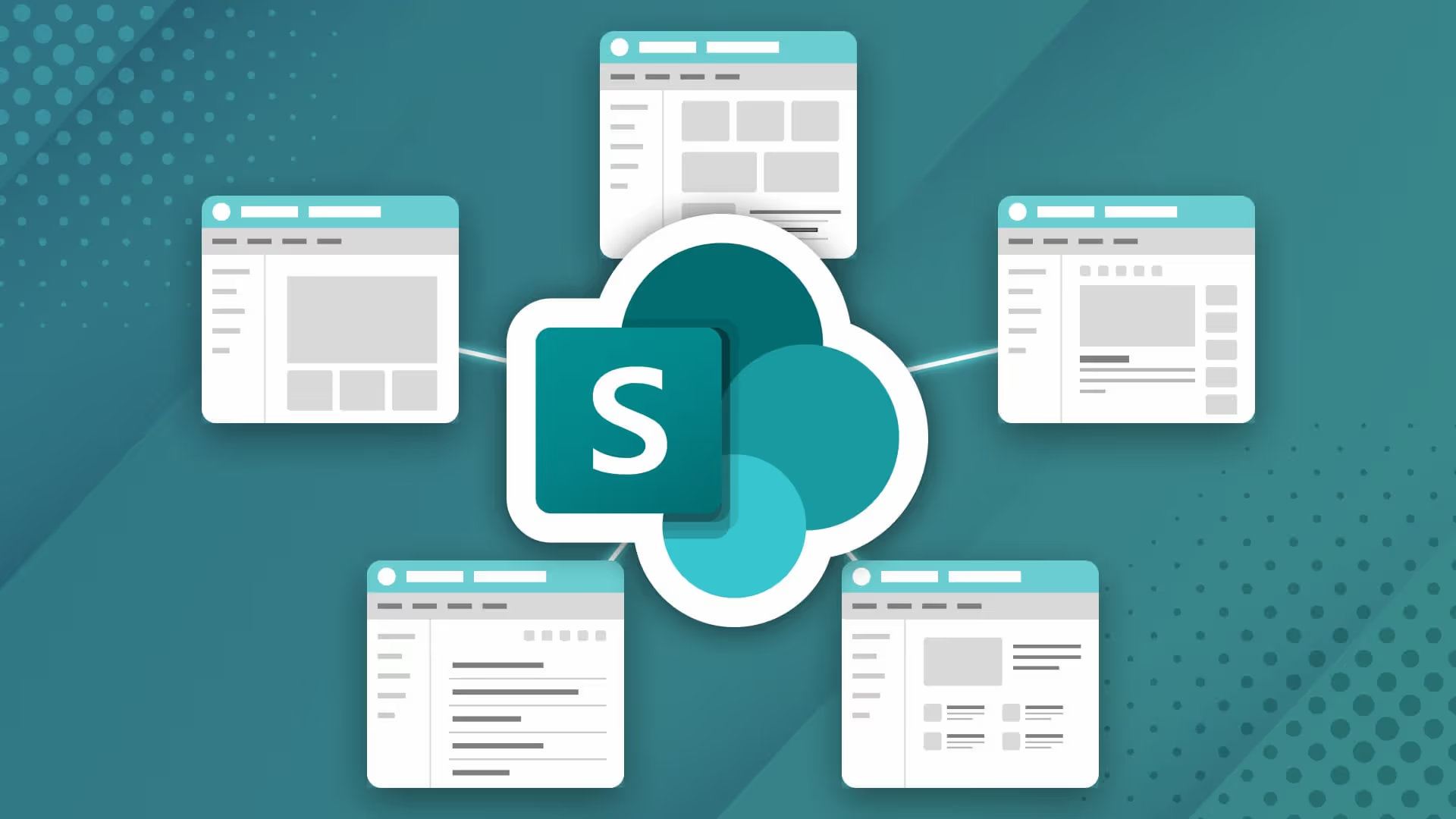Can’t Use Sub-Sites? Hub-Sites Are the Answer.
If you are adopting the modern paradigm for building SharePoint sites, you are probably being told to follow Microsoft’s “the world is flat” guiding principal. This type of architecture provides some benefits, but also creates some real challenges, like: I want the same navigation across all sites, I want to give access to all of the sites together, or I want to roll up content from multiple sites.
Hub sites are intended to address these challenges. I am going to help you understand what hub sites are and how they can help when you can’t use sub-sites.
What are hub sites?
A SharePoint hub site is just a normal SharePoint site that has been registered by a SharePoint administrator as a hub. Registering a site as a hub enables you to create a relationship between the hub and any other SharePoint site. Which enables you do things with the hub site and all of the associated sites, resulting in a grouping of sites instead of just a list of sites.

When you look at the image above you may notice that I didn’t show the structure in a traditional “site map”.

This is because a site map implies the sites exist in a hierarchy where the hub is the parent and the associated sites are children. This is NOT what happened. All the sites still exist next to each other. The only thing we have done is create an association.
NOTE: If you have a SharePoint site today, you could easily convert it into a hub by simply asking a SharePoint administrator to register it.

SELF ASSESSMENT
Is your business getting full value from your M365 subscription?
Billions of dollars are wasted each year on underused subscriptions. Take 3 minutes to find out where your tools are driving results, and where they’re holding you back.
Find Out Now

Is Team Communication Holding You Back?
Find Out in Just 2 Minutes.
Take our quick scorecard to uncover communication gaps and hidden barriers within your team.
How can a hub site help?
While hub sites do not work the same as sub-sites, they have a number of features that emulate some of the features available when using sub-sites.
Associating site together

This is the most basic feature enabled by hub sites, but it is probably the most important. You can associate any SharePoint site to a hub. Doing this creates a link between the two sites and enables all of the other features we are going to discuss.
Associate a SharePoint site with a hub site
Shared navigation

By associating a site to a hub, you automatically get another layer of navigation that is shared across all sites in the hub.
Set up your SharePoint hub site
Shared visitors

One of the biggest challenges for flat architecture is when you want multiple sites to have the same permission. This is specifically a problem for intranets. In this case most of the sites need to be configured so that large groups of users can read the sites. To solve this hub sites have a feature that will sync users or groups added to hub site visitors to associated sites. There are a number of things to consider when configuring this.
Set up your SharePoint hub site
Rollup content from all associated sites

By associating sites to a hub, you can roll up content across all of the associated sites. While there are a number of web parts that can take advantage of this functionality, the most prominent is the news web part. This web part will show news from each site and will display what site the news is coming from. This is one way to implement “news categories”.
What is a SharePoint hub site?
Searching across the hub
Search is a great feature of SharePoint. But it can be difficult to narrow the scope of search so get just what you want. One way you can improve this is by simply associating sites that are related to a single hub. By doing this, you can search only the sites that are associated with the same hub.
You can relate two hub sites

If you have a large group of sites that you want to connect you can even manage that. To manage this you can simply associate one hub to another. There are a bunch of unique functionality that comes when you associate one hub to another. I would recommend reading the documentation below in detail if that is something you want to do.
Associate a hub site to another hub site in the SharePoint admin center
You can relate both Communication and Collaboration sites
While communication sites are probably the most common types of sites associated to hubs, you can associate collaboration sites as well. This provides you options to have multiple sites with different purposes all associated to one hub.
Other things to keep in mind
While there are a number of great scenarios enabled when you use hub sites, there are some things you should be aware of.
Any owner can associate their site to your hub
By default any user who is the owner of a site can associate their site to your hub. This is often not ideal and Microsoft does provide two options to address this.
- When you register a hub you can configure a specific list of users who are allowed to associate sites to the hub.
- You can enable an approval workflow to associate a site to your hub.
Create a hub site in SharePoint
Set up your SharePoint hub site
Approval workflows for adding a site to a SharePoint hub
Only SharePoint administrators can register a site as a hub
If you have a SharePoint site that you want to register as a hub, you are going to have to work with your SharePoint Administrator to get this configured. There is no way for a “regular user” to do this.
Two layers of navigation can be hard to get your arms around
Hub site navigation on the surface seems to solve a lot of challenges with the flat architecture. However, there are a number of things that people don’t think about intuitively about how this will work. Primarily that you will have two layers of navigation that you need to think about.
Our suggestion is to start with just one. So whenever we implement a Hub navigation we remove all of the navigation at the site level. Once we have the hub navigation fleshed out, we will discuss what the site navigation should look like. It just gives users the ability to get used to the hub site navigation without the confusion.
Plan and implement SharePoint site navigation
Footers are not shared with associated sites
If you have created a footer in SharePoint and want to have that footer shared across all of the sites associated to the hub you can’t. You would need to configure the footer in each site or check out the next section 😊
You can configure a Site Template to be automatically applied to associated sites
You can configure a Hub site to have a Site Template that will be automatically applied to any site that becomes associated with the hub site. This functionality would allow you to define your footer in the Site Template. This is just one of the things you could automate using a Site Template.
Owners and members are not shared between associated sites
While you can use the Hub Site Visitor functionality to synchronize visitors to associated sites, there is no feature for owners or members. This means you will need to manage each owner and member group individually for each site. A good option is to leverage Azure AD groups to deal with this.
Wrap Up
While hub sites won’t make all of the flat architecture pains go away, they can help. They enable you to build highly flexible solution with similar functionality. So if you are building out a modern SharePoint implementation you should definitely look to leverage hub sites.







.jpg)







